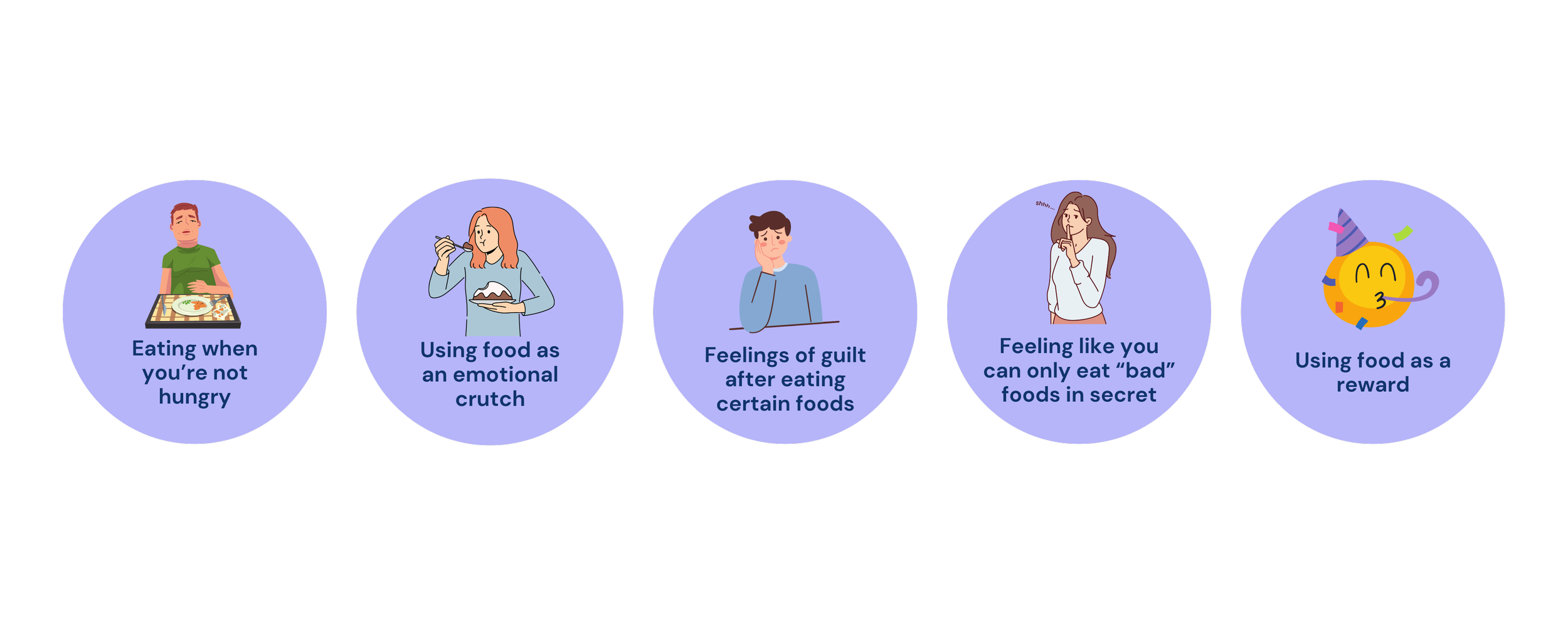Unlock the Secret to Conquering Emotional Eating
Picture this: it's been a long, stressful day, and all you can think about is diving into a tub of ice cream or demolishing a family-size bag of chips…
Sound familiar? You're not alone. Emotional eating is a common struggle many of us face, but pinpointing and managing these triggers can feel like navigating a maze blindfolded. Let's break down what emotional eating really is, how to spot the signs, and explore practical ways to cope with emotions without turning to food as your go-to solution.What is Emotional Eating?
At its core, emotional eating is using food as a coping mechanism for our feelings rather than to satisfy physical hunger. It's not just about stress or sadness - even happiness can trigger it! While it's perfectly normal to find comfort in food occasionally, consistently relying on it can lead to an unhealthy relationship with eating and impact our overall well-being. Understanding the psychology behind this behaviour is key to developing effective strategies to overcome it.
Signs You Might Be Emotionally Eating -
1. Eating When You're Not Hungry:
Ever find yourself mindlessly munching on snacks when your stomach isn't growling? This could be a red flag for emotional eating. Take a moment to check in with your body. Are you reaching for that bag of chips out of boredom, stress, or habit rather than genuine hunger? Break Binge Eating offers strategies for recognising emotional eating and how to stop it.
2. Using Food as Your Emotional Crutch:
When life throws you a curveball, is your first instinct to raid the fridge? If food is your go-to comfort when you're feeling stressed, anxious, or down in the dumps, it might be time to explore healthier ways to cope with these emotions.
3. The Guilt Trip After Eating:
Do you often feel a wave of guilt or shame wash over you after eating? This could be a sign that you're using food to soothe your emotions. Remember, food isn't the enemy - it's okay to enjoy it without beating yourself up. Overcoming emotional eating often involves addressing these feelings of guilt head-on.
4. Sneaky Snacking:
If you find yourself hiding food or sneaking snacks when nobody's looking, it could be a sign of emotional eating. This behavior suggests you might be using food as a way to deal with feelings rather than hunger. Recognising this pattern is a crucial step in breaking the cycle.
5. Food as a Reward System:
Do you treat yourself to a decadent dessert after a tough day or use food as a pat on the back for your accomplishments? While celebrating with food occasionally is fine, making it a habit can lead to emotional eating patterns. Finding non-food ways to reward yourself can help manage this tendency.Strategies to Manage Emotional Eating -
1. Become a Food Detective:
Start a food and mood journal to track your eating habits and emotions. By playing detective with your own behavior, you can spot patterns and identify specific triggers that lead to emotional eating. Once you've cracked the code on your triggers, you can develop healthier coping strategies.
2. Embrace Mindful Munching:
Mindful eating is like hitting the pause button on your meal. Slow down and really savor your food. Pay attention to the flavors dancing on your tongue, the textures, and even the aroma. This practice can help you reconnect with your body's true hunger signals and reduce those emotional eating episodes. Headspace offers valuable insights into mindful eating, including its principles and benefits.
3. Build Your Emotional Toolbox:
Time to get creative! Brainstorm a list of activities that can help you regulate your emotions without reaching for the cookie jar. Maybe it's soaking in a bubble bath, losing yourself in your favorite tunes, getting artsy, tackling a jigsaw puzzle, catching up with a friend, taking a stroll in nature, striking a yoga pose, or diving into a hobby you love. These can be your go-to alternatives when emotions start to bubble up.
4. Create a Food Routine:
Establishing a regular meal schedule can be a game-changer. It helps you distinguish between physical hunger and emotional cravings. By planning your meals, you can prevent impulsive eating and feel more in control, reducing the chances of emotional eating taking over.
5. Don't Go It Alone:
If emotional eating feels like an uphill battle, remember that it's okay to ask for backup. Whether it's confiding in a trusted friend, family member, or seeking guidance from a professional like a Dietitian, having someone in your corner can make all the difference in overcoming emotional eating. The Butterfly Foundation provides a helpline and resources for those struggling with various eating-related issues, including emotional eating.
Wrapping it up -
Emotional eating is a common hurdle, but it doesn't have to control your life. By recognising the signs and implementing these strategies, you can start building a healthier relationship with both food and your emotions. Remember, this journey isn't about perfection - it's about progress. Every small step you take is a win worth celebrating!
Craving more support on your journey? Check out my latest guide, THE ANTI DIET METHOD. It's packed with practical tools and insider tips to help you break free from the restrictive dieting trap and cultivate a healthier relationship with food. From mindful eating techniques to understanding your emotional triggers, this guide is your roadmap to creating a more sustainable approach to food and wellness. Don't miss out - grab your copy here!
Looking for some inspiration to kickstart your balanced eating routine? I've got you covered! Snag my FREE Recipe Ebook, bursting with 30 delicious, balanced meal ideas to fuel your journey. It's just a click away here!
Written by Bronwen Greenfield (APD).



